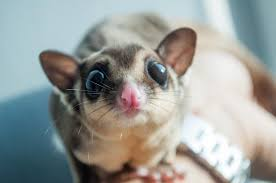Sugar Glider

Description
Sugar Gliders are a type of small arboreal, nocturnal marsupial possum native to Papua-New Guinea, Tasmania, Indonesia and the east coast of Australia. They inhabit the treetops and open areas in tropical or coastal forests and drier, inland tropical forests. Sugar Gliders may live in colonies of up to 10 individuals per hectare (10,000 square meters). They posses a gliding membrane called the patagium, which stretches between the front and hind legs. Reported gliding distances are as long as 100 meters.
Scientific Name
Petaurus breviceps
Country Of Origin
Size
Life Expectancy
On average, sugar gliders live approximately 10 to 15 years in captivity but only five to seven years in the wild
Varieties
There are 11 species of possums in the Petauridae family. They are split into three genera: six species of Petaurus, which include the sugar glider; one species of Gymnobelideus, which is called the Leadbeater’s possum; and four species of Dactylopsila, or striped possums. There are seven subspecies of Petaurus breviceps. P.b. longicaudatus, which occurs in Queensland, Australia and P.b. ariel in the Northern Territory. P.b. flavidus, P.b. tafa, P.b. papuanus and P. b. biacensis reside in the various regions of New Guinea and Indonesian Providences. P. breviceps breviceps extends from Tasmania to just south of the Tropic of Capricorn.